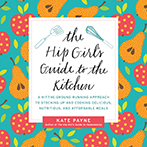Yes you can (Part I)
…make bread.
Gather your supplies in advance (so as to not turn this into a whole day affair.)
Here’s what you’ll need from the store:
~1lb whole wheat bread flour
~1lb all purpose white flour
two yeast packets
salt
sugar or honey
little bit of butter
some olive oil
And for equipment:
-Do you have loaf pans? Don’t fret if you don’t; nearly all grocery stores have them for about $4 or $5. I recommend the medium size (8.5 x 4.5”) since most recipes will fill two; they look like this: loaf pans and my friend Mr. Butter-Standard mixing bowl
loaf pans and my friend Mr. Butter-Standard mixing bowl
-Wooden spoon
-Clean counter space (for kneading)
-Kitchen towel or tea towel
-basic (cheap) kitchen thermometer
-rack of some sort (I make my own out of canning bands, see below); other good substitutes include a wire, office paper bin, your hanging fruit basket turned upside-down, anything that will allow air to reach underneath your finished loaves while they’re cooling. Be creative; don’t just rush out and buy a bakers rack. my makeshift cooling rackSince you’re busy, we’re going to stretch this process out. By preparing the dough the first night and baking on the second, you’re setting yourself up for success with two manageable tasks each night.
my makeshift cooling rackSince you’re busy, we’re going to stretch this process out. By preparing the dough the first night and baking on the second, you’re setting yourself up for success with two manageable tasks each night.
Go gather your supplies. Then read Parts II and III for the actual recipe and helpful hints as you attempt to follow it.





 Friday, October 23, 2009 at 9:05AM
Friday, October 23, 2009 at 9:05AM
Reader Comments (4)
[...] series’ numbering system is sorta confusing. You have your supplies already because you read this, the first post in this series, so now you’re ready for Part Deux or Night One (see? [...]
I used to bake bread when I was revising for exams - in the old fashioned way, you leave it for 45 minutes between kneading and knocking back, which is the exact amount of time the human brain can concentrate for.
Maybe I should start again...
what a perfect way to allot yourself work/study time!
[...] One. Your dough has been rising for 22 days. Assuming, that is, you rushed out to the store and stocked your pantry and then dove into the first night of a two-day slow rise when I first [...]